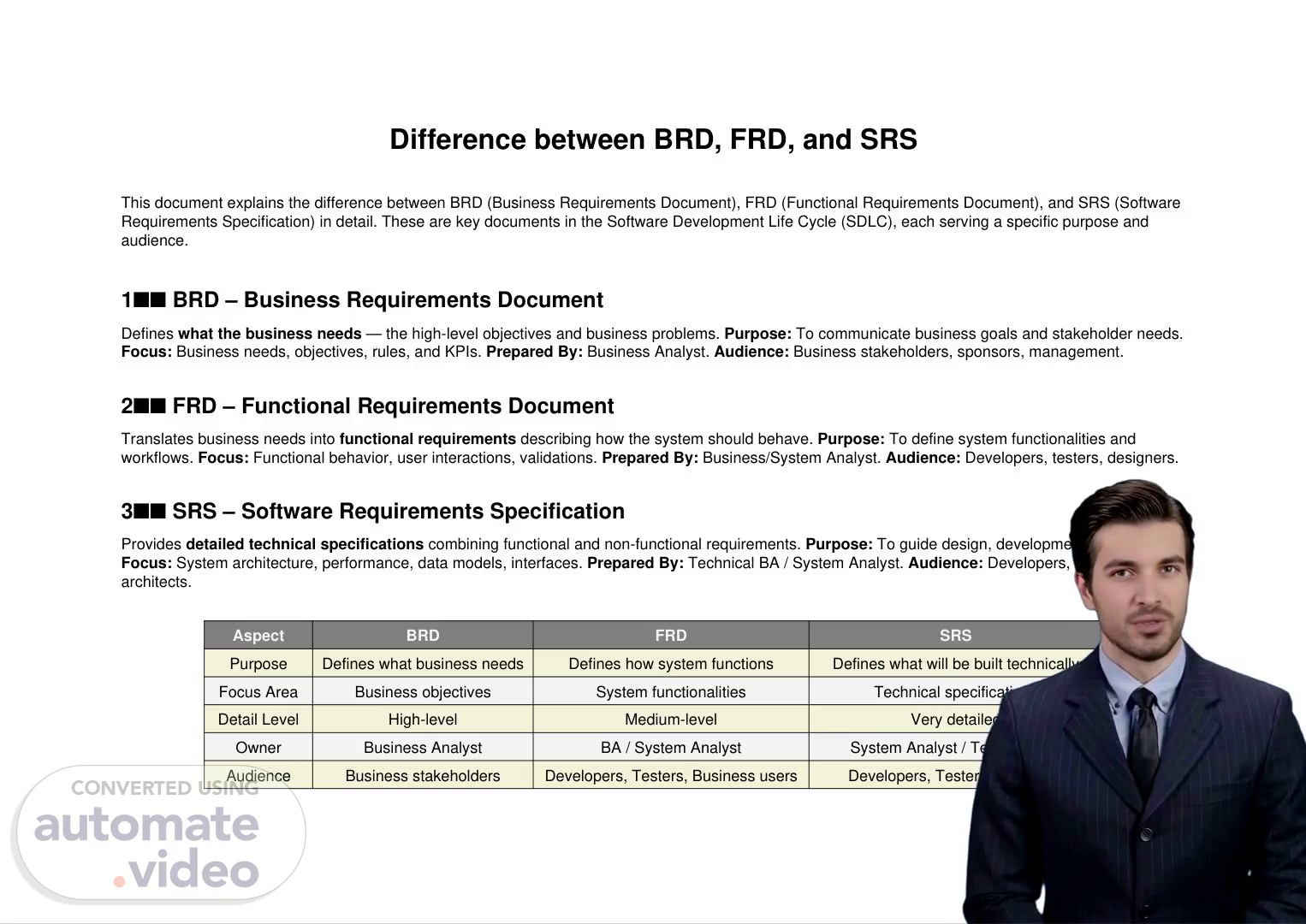Scene 1 (0s)
[Virtual Presenter] The three documents serve distinct purposes within the software development life cycle. A Business Requirements Document outlines the business needs and objectives, providing a high-level overview of the requirements. This document is prepared by a business analyst and is intended for business stakeholders, sponsors, and management. A Functional Requirements Document translates these business needs into functional requirements, detailing how the system should behave. This document is also prepared by a business analyst but is targeted towards developers, testers, and designers. In contrast, a Software Requirements Specification provides detailed technical specifications, combining both functional and non-functional requirements. This document is typically prepared by a technical business analyst or system analyst and is aimed at guiding design, development, and testing. Each document serves a unique role in the software development process, with different levels of detail and focus areas. Understanding the differences between these documents is essential for effective communication and collaboration among team members..
Scene 2 (1m 12s)
[Audio] The Business Requirements Document (BRD) is a critical component of any software development project. The BRD outlines the business goals, scope, and key performance indicators (KPIs) for a project. It also includes use cases, workflows, and business rules that define the functionality of the system. The BRD serves as a blueprint for the entire project, ensuring that all stakeholders are aligned and working towards the same objectives. The Functional Requirements Document (FRD) is another essential component of a software development project. The FRD focuses on the "how" of a project, detailing the functional aspects of the system. It includes use cases, workflows, and business rules that outline the operational procedures of the system. The FRD also covers both functional and non-functional requirements and interfaces. The Software Requirements Specification (SRS) is a detailed document that outlines the technical requirements and specifications of a system. The SRS provides a comprehensive roadmap for the project, covering all aspects of the system's design and development. It includes technical requirements such as hardware, software, and network infrastructure, as well as user interface and usability considerations. Together, the BRD, FRD, and SRS form a crucial part of any software development project. They are used throughout the project lifecycle, from initiation and planning to analysis and design, and finally to design and development. By carefully considering and documenting each aspect, stakeholders can ensure a successful project outcome. The BRD, FRD, and SRS work together to provide a clear understanding of the project's goals, objectives, and deliverables, enabling stakeholders to make informed decisions and drive the project forward..
